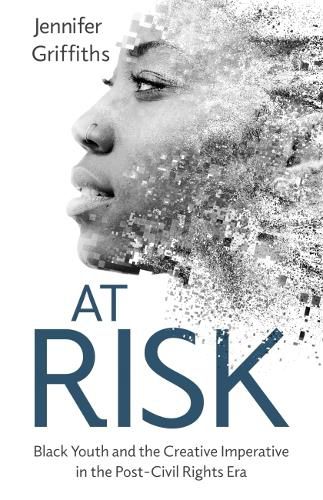Readings Newsletter
Become a Readings Member to make your shopping experience even easier.
Sign in or sign up for free!
You’re not far away from qualifying for FREE standard shipping within Australia
You’ve qualified for FREE standard shipping within Australia
The cart is loading…






This title is printed to order. This book may have been self-published. If so, we cannot guarantee the quality of the content. In the main most books will have gone through the editing process however some may not. We therefore suggest that you be aware of this before ordering this book. If in doubt check either the author or publisher’s details as we are unable to accept any returns unless they are faulty. Please contact us if you have any questions.
Jennifer Griffiths’s At Risk: Black Youth and the Creative Imperative in the Post-Civil Rights Era focuses on literary representations of adolescent artists as they develop strategies to intervene against the stereotypes that threaten to limit their horizons. The authors of the analyzed works capture and convey the complex experience of the generation of young people growing up in the era after the civil rights movement. Through creative experiments, they carefully consider what it means to be narrowed within the scope of a sociological problem, all while trying to expand the perspective of creative liberation. In short, they explore what it means to be deemed an at risk youth.
This book looks at crucial works beginning in 1968, ranging from Sapphire’s Push and The Kid, Walter Dean Myers’s Monster, and Dael Orlandersmith’s The Gimmick, to Bill Gunn’s Johnnas. Each text offers unique representations of Black gifted children, whose creative processes help them to navigate simultaneous hypervisibility and invisibility as racialized subjects. The book addresses the ways that adolescents experience the perilous at risk label, which threatens to narrow adolescent existence at a developmental moment that requires an orientation toward possibility and a freedom to experiment.
Ultimately, At Risk considers the distinct possibilities and challenges of the post-civil rights era, and how the period allows for a more honest, multilayered, and forthright depiction of Black youth subjectivity against the adultification that forecloses potential.
$9.00 standard shipping within Australia
FREE standard shipping within Australia for orders over $100.00
Express & International shipping calculated at checkout
This title is printed to order. This book may have been self-published. If so, we cannot guarantee the quality of the content. In the main most books will have gone through the editing process however some may not. We therefore suggest that you be aware of this before ordering this book. If in doubt check either the author or publisher’s details as we are unable to accept any returns unless they are faulty. Please contact us if you have any questions.
Jennifer Griffiths’s At Risk: Black Youth and the Creative Imperative in the Post-Civil Rights Era focuses on literary representations of adolescent artists as they develop strategies to intervene against the stereotypes that threaten to limit their horizons. The authors of the analyzed works capture and convey the complex experience of the generation of young people growing up in the era after the civil rights movement. Through creative experiments, they carefully consider what it means to be narrowed within the scope of a sociological problem, all while trying to expand the perspective of creative liberation. In short, they explore what it means to be deemed an at risk youth.
This book looks at crucial works beginning in 1968, ranging from Sapphire’s Push and The Kid, Walter Dean Myers’s Monster, and Dael Orlandersmith’s The Gimmick, to Bill Gunn’s Johnnas. Each text offers unique representations of Black gifted children, whose creative processes help them to navigate simultaneous hypervisibility and invisibility as racialized subjects. The book addresses the ways that adolescents experience the perilous at risk label, which threatens to narrow adolescent existence at a developmental moment that requires an orientation toward possibility and a freedom to experiment.
Ultimately, At Risk considers the distinct possibilities and challenges of the post-civil rights era, and how the period allows for a more honest, multilayered, and forthright depiction of Black youth subjectivity against the adultification that forecloses potential.